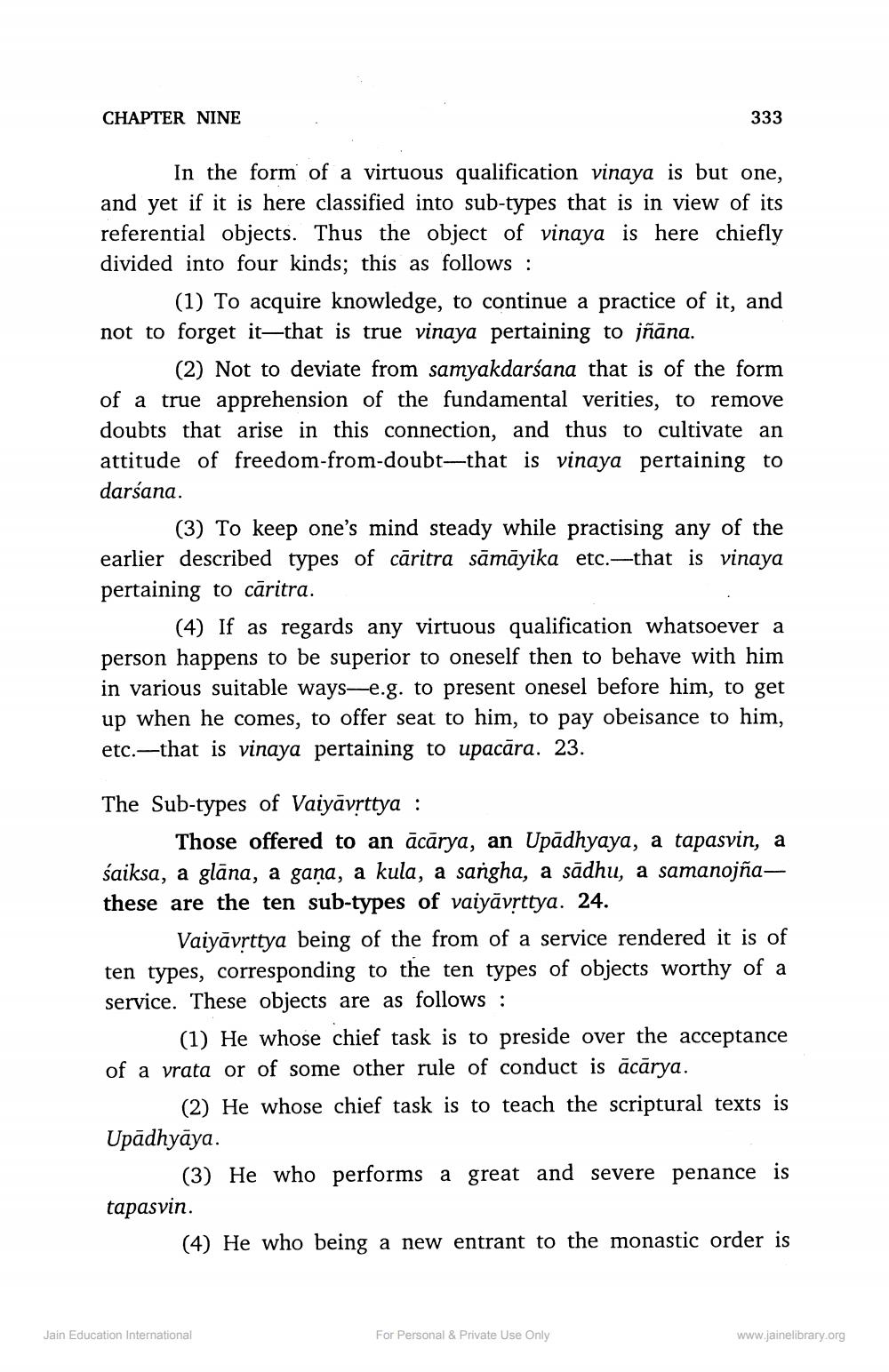________________
CHAPTER NINE
333
In the form of a virtuous qualification vinaya is but one, and yet if it is here classified into sub-types that is in view of its referential objects. Thus the object of vinaya is here chiefly divided into four kinds; this as follows :
(1) To acquire knowledge, to continue a practice of it, and not to forget it—that is true vinaya pertaining to jñāna.
(2) Not to deviate from samyakdarśana that is of the form of a true apprehension of the fundamental verities, to remove doubts that arise in this connection, and thus to cultivate an attitude of freedom-from-doubt—that is vinaya pertaining to darsana.
(3) To keep one's mind steady while practising any of the earlier described types of cāritra sāmāyika etc.—that is vinaya pertaining to cāritra.
(4) If as regards any virtuous qualification whatsoever a person happens to be superior to oneself then to behave with him in various suitable ways—e.g. to present onesel before him, to get up when he comes, to offer seat to him, to pay obeisance to him, etc.—that is vinaya pertaining to upacāra. 23.
The Sub-types of Vaiyāvíttya :
Those offered to an ācārya, an Upādhyaya, a tapasvin, a śaiksa, a glāna, a gana, a kula, a sangha, a sādhu, a samanojñathese are the ten sub-types of vaiyāvrttya. 24.
Vaiyāvrttya being of the from of a service rendered it is of ten types, corresponding to the ten types of objects worthy of a service. These objects are as follows :
(1) He whose chief task is to preside over the acceptance of a vrata or of some other rule of conduct is ācārya.
(2) He whose chief task is to teach the scriptural texts is Upadhyāya.
(3) He who performs a great and severe penance is tapasvin.
(4) He who being a new entrant to the monastic order is
Jain Education International
For Personal & Private Use Only
www.jainelibrary.org




